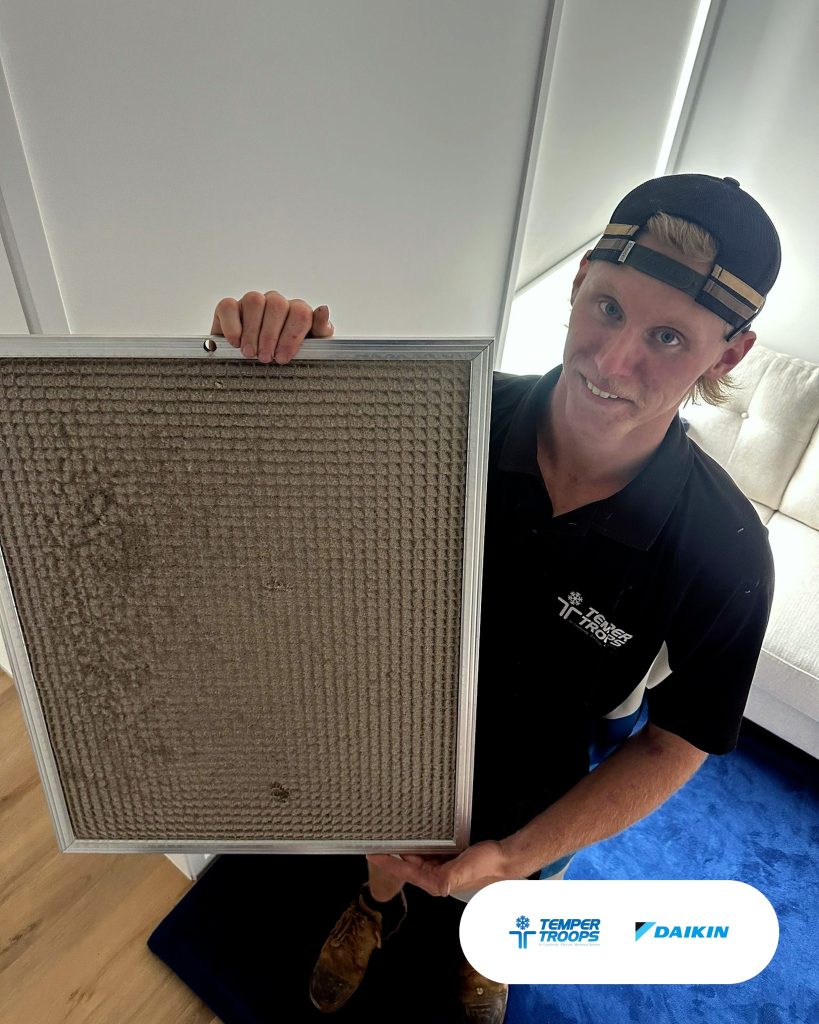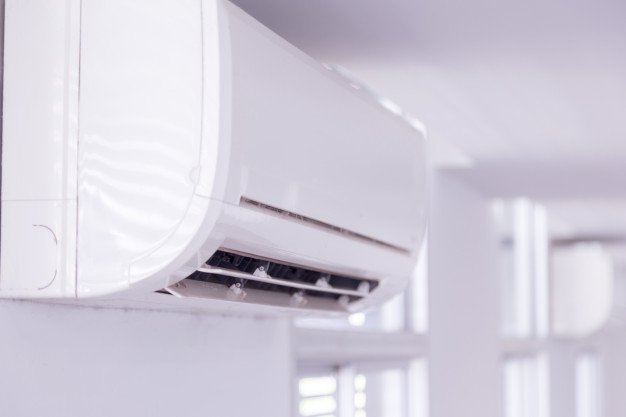During Australia’s hot and dry summers, your air conditioner can be a blessing. But just like any other appliance, your air conditioning unit needs regular maintenance to prevent mould spores.
That’s right! Despite its mostly dry climate, air conditioner mould is a common issue among property owners in Australia. That’s because air conditioner units provide a dark, warm, and humid environment aka the best conditions for mould to thrive. Whether you’re dealing with mould in your aircon or want to prevent it, here’s a helpful guide! We’ll walk you through the dangers of mould in your air ducts, how to prevent mould growth, and what you should do if you already have it.
Dangers of Mould Spores in Air Conditioners
Mould is a type of fungi that feeds on organic matter and grows in dark and humid environments, both indoors and outdoors. When inhaled, it can contribute to various health risks, such as:
Allergic Reactions
If you or a family member suffers from a mould allergy, mould spores in your air conditioner could trigger an allergic reaction. Common symptoms include skin rashes, sneezing, watery eyes, a blocked nose, and itchy eyes. To make matters worse, long-term exposure to mould particles could cause chronic allergies.
Respiratory Issues
When you have a mouldy air conditioner, some of the first health issues you’ll notice are respiratory problems. These include a blocked nose, coughing, wheezing, and other asthma symptoms.
Headaches
Mould growth in your air conditioner could cause symptoms such as fatigue, headaches, and nausea. This explains why you may find it harder to concentrate if your air conditioning unit has a mould infestation.
These symptoms occur because exposure to mould in the air can cause inflammation in the airways and lungs. Though not all moulds are created equal, the type that grows in air conditioning units, such as black mould, can cause adverse health consequences.

Common Signs of Mould In Ducted Air Conditioning Unit
So, you’re worried that you have mould in your air conditioner, but how can you know for sure? Here are some signs to look out for:
Musty Smells Coming From Your AC Unit
The biggest telltale sign of mould in the aircon is a musty smell that gets worse when you turn on the air conditioning. When mould grows and reproduces, it creates MVOCs or microbial volatile organic compounds. Most of these gases are odourless, but some of them, called mycotoxins, give off a musty smell.
Black or Grey Spots Inside The Unit or On Air Filters
Though it starts as something invisible, mould in air conditioning units can become a serious problem over time. If you suspect a potential mould problem, check your air conditioner unit.
Black or grey circular marks on the filters or in the unit are a clear sign of air conditioner mould. These spots aren’t just dust but mould colonies that are releasing harmful spores.
Feeling Sick Indoors
Mould buildup in your air conditioner can cause various health problems. Because of this, you may feel sick when indoors, especially if you’re working or sleeping near a mouldy aircon.
What To Do If Your Air Conditioner Has Mould
If you spot the above-mentioned signs and find mould in the system, you have two options: clean it yourself or hire a professional. If you want to try removing it yourself, you’ll need the right tools, such as:
- A respirator, goggles, and gloves to avoid coming into contact with mould.
- Soapy water solution, microfiber cloth, a soft brush, and a vacuum cleaner.
Remove The Cover and Air Filters
Switch off your air conditioner and unplug it from the power supply. Then, remove the cover and filters as per the instruction manual. Check the filter for dirt, debris, or mould.
Clean Up The Components
Here’s how to clean up the inner workings of your air conditioner:
- Use a vacuum cleaner with a brush attachment to remove loose dust and debris from the filters.
- Prepare a soap and water solution and use it to soak the air conditioner cover for a few minutes. Use a soft toothbrush to remove any grime, dirt, or mould before rinsing the cover and leaving it to dry.
- Gently remove any mould on the evaporator coils using a soft toothbrush. If you’re having a hard time removing the mould this way, consider getting other chemical cleaners formulated for air conditioners.
- Clean the drain pain and fan blades using a soap and water solution, while scrubbing away mould using a toothbrush.
After cleaning the components, use an air conditioner disinfectant to disinfect the unit and its components.
Know When To Hire A Professional For Removing Mould
Another option is to hire a specialist for professional mould removal. Here are a few reasons to consider it:
Persistent odour caused by mould:
If you try cleaning the aircon system but can still smell the same musty odour, it means that mould is growing within the ducts. To address the issue, you should call a professional.
There’s too much mould:
When there’s visible mould in air conditioners, it means that the problem can no longer be fixed with DIY efforts. In this case, you’ll need a professional to clean the vents, components, and ducts.
You have asthma:
If you struggle with respiratory health problems, it’s best to call an expert for mould removal. Without proper equipment and tools, mould removal can be dangerous and worsen pre-existing health issues.
How To Prevent Aircon Mould
If you’re not dealing with mould in your air conditioner, consider yourself lucky. But when it comes to preventing mould growth, you’ll need more than luck. Here are tips on how to prevent it:
Get Your AC Unit Serviced
For starters, you should call in an air conditioning specialist to service your aircon every year. Worried about the cost? Trust us, it’s either this facing the horrifying scenario or finding mould in your aircon.
Schedule a Deep Clean For Cooling Coils
Dirty AC components, such as cooling coils, are the perfect breeding ground for mould and bacteria. That’s why we recommend deep cleaning the indoor coils to get rid of any dirt and mould.
Make sure you call a professional with excellent working knowledge of air conditioning systems. They’ll use a pressure washer to clean mould from your cooling coils.
Clean The Grilles
Besides the main components, your grilles and ceiling diffusers need regular cleaning, too. We recommend using a surface mould removal spray to wipe down the grilles.
Clean Your Air Filters
Check the filters in your air conditioner and try to clean them every few weeks. But if they still look dirty despite cleaning them, call an air conditioning expert to install new filters.
Run The Unit On Fan Mode
At rest, the interior warms up residual moisture, which is perfect for mould to grow. Next time you leave the house, leave the aircon running in fan mode to eliminate leftover moisture.
Use A Dehumidifier System
If your home is typically very damp, we recommend installing a dehumidifier to reduce humidity levels indoors. This, along with other measures, can slow down mould growth.
Need An Expert To Remove Mould in the Air Conditioning System? Call Us Today For a Free Quote
Want to call in a professional to clean your aircon system and get rid of mould? Call our expert team at Temper Troops today and get a free quote for air conditioner cleaning!


